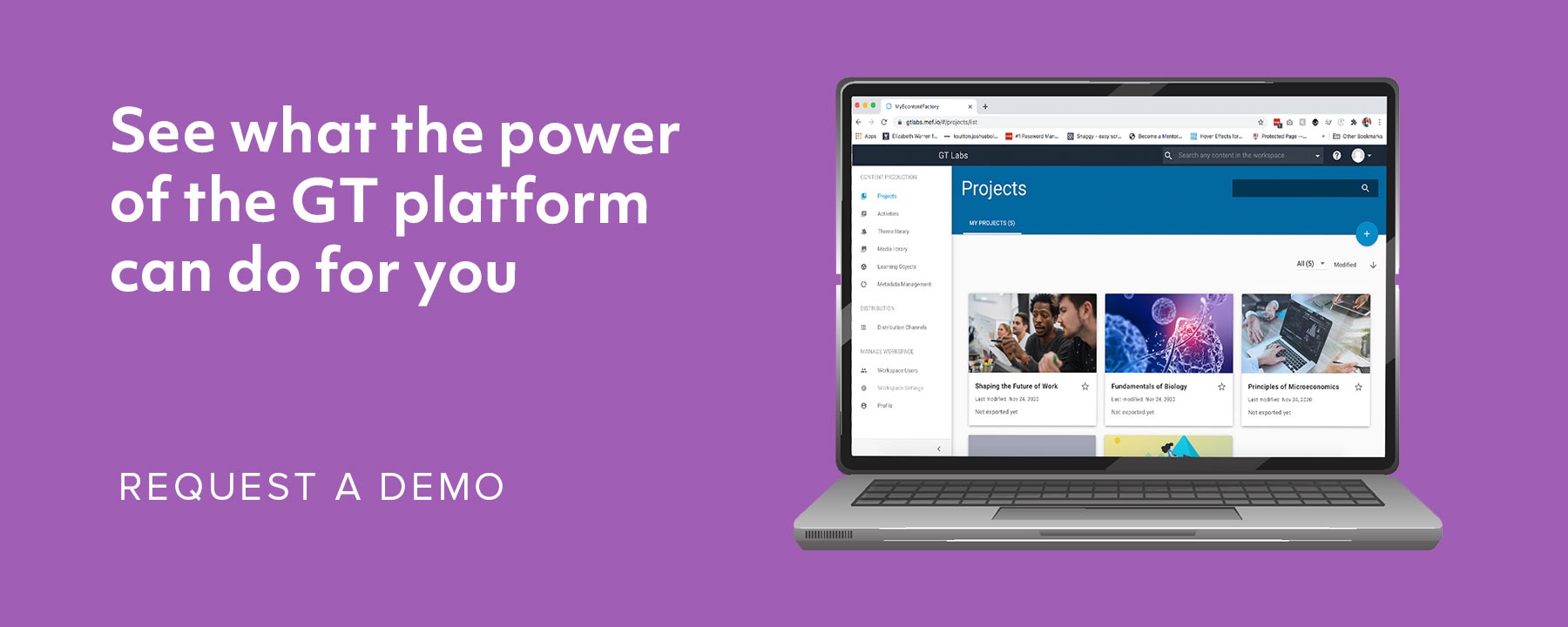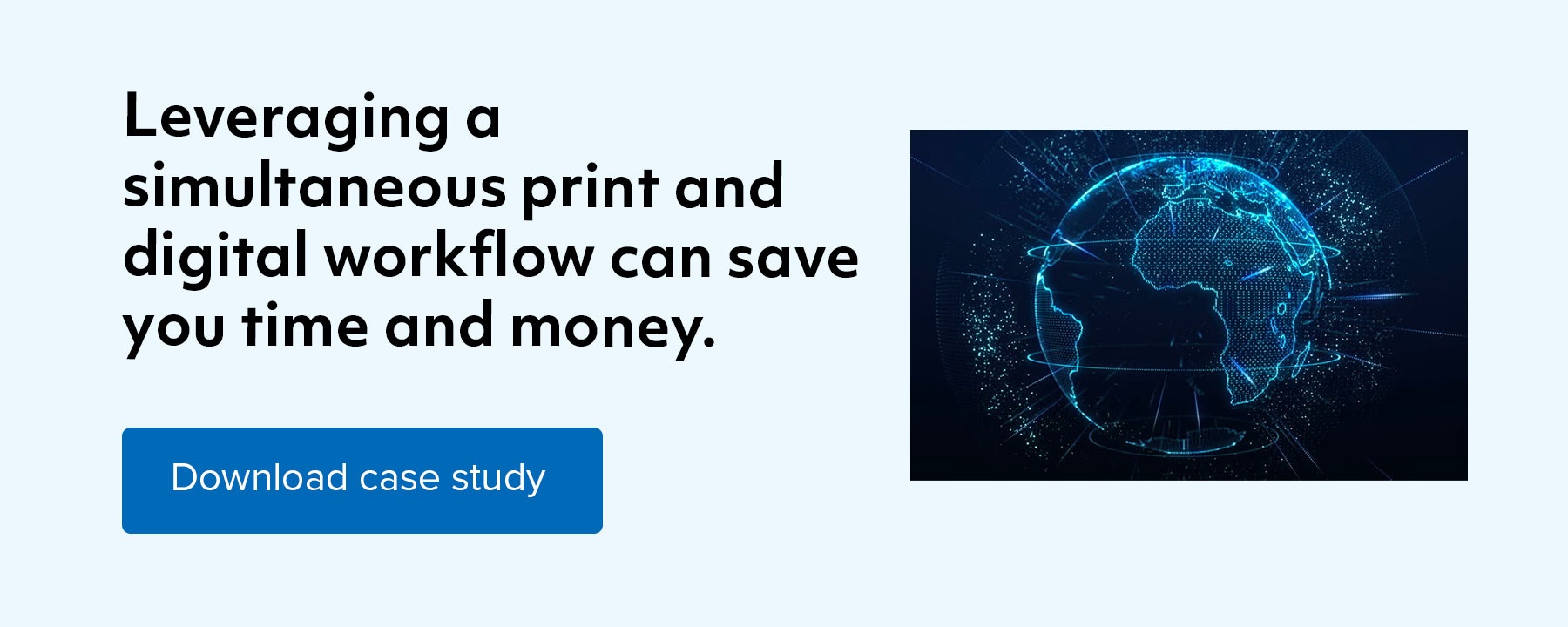Digital first is not a new concept, but in our current climate of rapid change, it is time to promote it from "nice to have" status to "must have." It is critical to appreciate its enormous potential to not only optimize current operational costs but also lay a strong foundation for innovation and growth within your organization that can keep pace with ever-evolving market conditions.
What is digital first and why does it matter?
Switching to a digital first mindset within an organization means a shift from prioritizing traditional print channels to designing for digital ones. To fully embrace this strategy, it’s important to appreciate that digital first doesn’t mean digital only, it simply means designing your content with digital users, rather than print users, in mind as your primary users, and not waiting to develop the digital version of the content until the print version is completed.
The digital opportunity invites an organization to re-examine the way it is executing its core business. With the right content management platform, you can create and preview new products, collaboratively and in real time, accelerating your time to market, while simultaneously creating print versions of the same content.
For education publishing companies, for example, the traditional mission was to produce well-designed textbooks to support a reading-based pedagogy. But now, there are almost endless possibilities to create much more interactive, immersive, and personalized experiences for digital users. And more and more, particularly in the wake of the pandemic lockdown, engagement is what their student customers are demanding. Furthermore, digital first offers the ability to do quick testing of learning design, activities and assessment even prior to full release to achieve better product-market fit. Approached the right way, this presents an opportunity for publishers to make the learning experience so much better for the learner than the traditional print experience that the learner will never want to go back to print. Organizations that do not appreciate the importance of this shift may find themselves falling behind.
And a properly executed digital first strategy will do much more than just help your organization survive and stay in step with current market realities. Costs will be reduced - fixing a print error, for example, is generally far more expensive than making a digital correction. There’s more automation, less starts and stops, and more real time collaboration, all of which lower production costs. Similarly, digital provides a much higher degree of flexibility and agility to make and distribute changes on the fly. The time and energy gained by streamlining the creation, design, and distribution of content also frees up tremendous time and resources to focus on developing new innovative products.
The biggest obstacle: change management
Opening up the digital option to your teams will allow them to think completely differently about the products they are making and how they are making them. Exciting, right? Maybe to you, thought-leader-reading-this-blog-post, but often phrases like “digital first” and “digital transformation” can be the source of nail-biting for employees. It’s important to put some thought into how you socialize a digital first mentality within your organization, as well as how you implement a digital first approach in manageable phases, so it creates a feeling of excitement versus stress or fear.
Some tips for overcoming organizational fear of digital
- Why: Show your team why it matters. Make sure they understand the value of a digital by default mindset. Digital is really all about people, not technology. It’s about giving your end user the experience they want. In 2021, that’s often going to be a more interactive and personalized experience. And organizationally, a digital-first process will future-proof your business. It is unlikely the world is ever going back to paper at the same levels as before.
- How: Show employees how it will make their jobs easier and - perhaps most importantly - not obsolete. In fact, it will liberate them to create and innovate more to meet customer needs in completely new ways.
- The Right Tools: Give your team members the proper technology. A collaborative, intuitive interface such as GT’s content management platform will allow teams to work together to build amazing new digital experiences quickly and efficiently. GT’s platform incorporates re-use tools and smart meta tagging and allows simultaneous creation of digital and print products, including real time previews of both. As a result, your team will have more time to focus on what and not how - that is, creating new content and products rather than lower-level operating logistics.
With the right frame of mind and the right technology framework, organizations that commit to a paradigm shift to a digital first mentality now will not only be able to start optimizing current operations but drastically improve their capacity to adapt, innovate and thrive in an ever-changing future.








Leave a comment